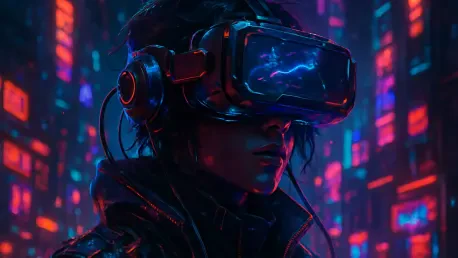In an unexpected shift toward high-tech innovation, ByteDance, the parent company of the popular social media platform TikTok, has set its sights on the burgeoning mixed reality landscape. The company is reportedly developing a new VR headset under its virtual reality subsidiary, Pico. This strategic move signals ByteDance’s ambition to diversify beyond its social media roots and tap into the growing market of wearable technology. The forthcoming headset is poised to deliver a seamless experience by utilizing an external puck connected by a wire, an approach reminiscent of Apple’s Vision Pro. By offloading computing tasks to this external component, ByteDance aims to achieve a compact design, enhanced performance, and minimized lag through custom chipsets, potentially disrupting the current wearable tech landscape.
Competing in the Mixed Reality Market
ByteDance’s entry into the mixed reality sector introduces a formidable challenge to established tech giants such as Apple, Meta, Google, and Samsung. These companies have already made significant strides in the realm of smart glasses and headsets, each vying for dominance in this rapidly evolving market. Meta continues to lead the charge with its Ray-Ban smart glasses, setting a benchmark for competitors. Despite the competitive pressure, ByteDance remains undeterred, aiming to replicate the disruptive success that TikTok achieved in the social media space. The company’s focus on low-latency performance through custom chip development underscores its commitment to delivering a superior user experience. By prioritizing these technological advancements, ByteDance aspires to carve a substantial niche within the smart wearable market and offer consumers an innovative alternative to existing products.
Strategic Diversification and Potential Impact
ByteDance’s leap into the hardware domain aligns with a broader trend of major digital platforms expanding their technological ecosystems. This diversification not only aims to boost consumer interaction but also positions the company as a significant competitor in the wearable tech market. With the growing popularity of augmented and virtual reality, ByteDance is well-placed to use its distinct approach to make a significant impact. This shift could change how consumers view wearable technology, attracting a new audience eager for innovative experiences. By utilizing its social media engagement skills and applying them to hardware design, ByteDance hopes to drive innovation that appeals to tech-savvy users.
Looking forward, ByteDance’s exploration into mixed reality holds great promise for shaping consumer expectations and market trends. Despite the uncertain future of this sector, ByteDance’s commitment to innovation and strategic foresight could cement its role as a key influencer in the wearables arena. As the company perfects its headset and broadens its reach, this development’s impact might extend well beyond its debut, influencing the future of the mixed reality industry.









